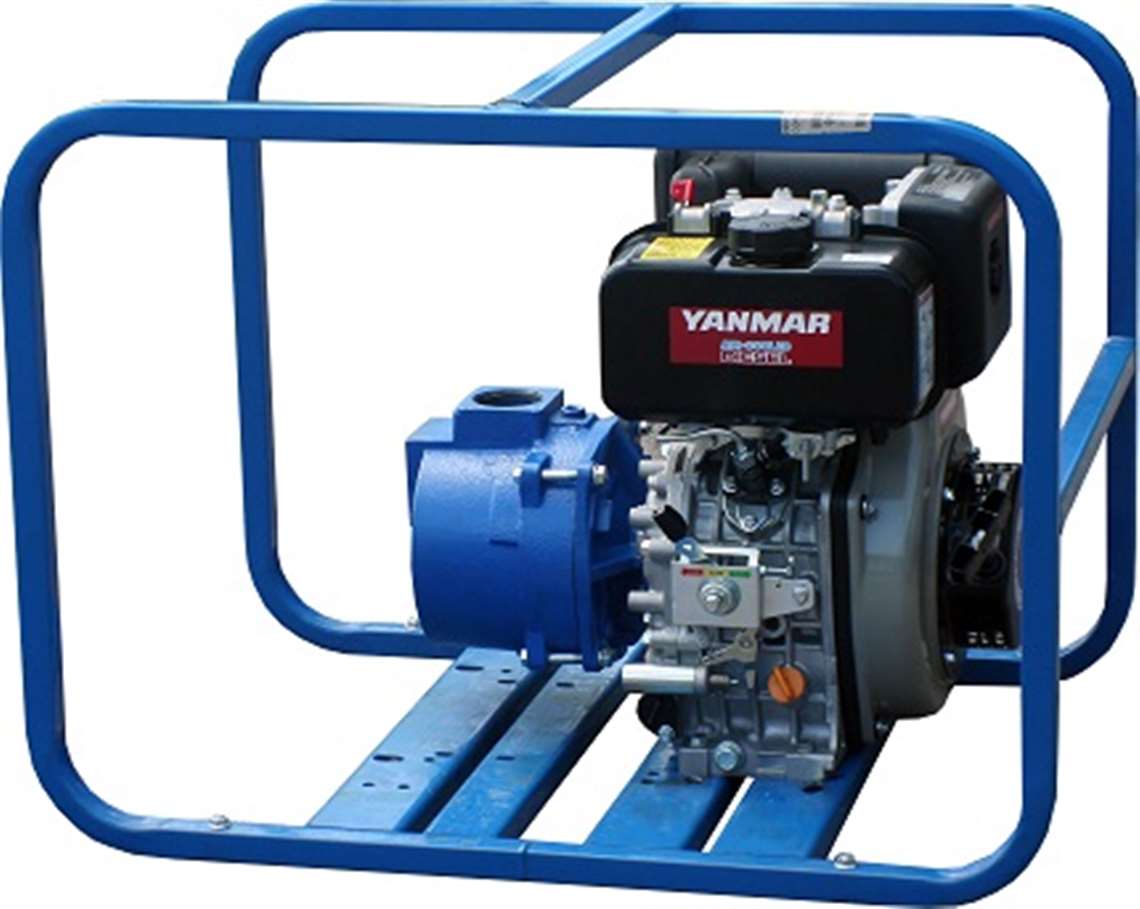MasPower Trash Pump
19 July 2019

MasPower, a division of Mastry Engine Center, St. Petersburg, Fla. has added a new 2 in. Yanmar-powered trash pump to its line 2 in., 3 in. and 4 in. pump sets. MasPower said the set has an operational capacity of about 3 to 4 hours. The package weighs 199 lbs.
The new MasPower model MPW702T set has a maximum working pressure of 75 psi and pairs an AMT 3168-K5 cast iron pump with a Yanmar 6.7 hp L70W diesel engine. The pump and engine are housed in a cast iron, powder-coated frame.
The pump has an output of 170 gpm, can self-prime up to 20 ft., and has a semi-open, clog resistant impeller and a built-in check valve. Other features include auto-return decompression for starting at all temperature conditions. Options include Camlock fittings, a 10 in. sold wheel kit, a spark arrestor and electric starting.
The Yanmar L70 diesel is a 320 cc single-cylinder, vertical cylinder, air-cooled diesel. Arley Bedillion, industrial sales manager said, MasPower had offered a 2 in. pump set previously, and re-entered that segment when the Tier 4 final compliant L70W model became available.
“We sell the 2 in. sets to contractors or farmers who prefer to have a diesel unit on their sites. Typically everything they own is diesel and they would prefer a diesel, especially if they’re using them continuously every day,” Bedillion said. Rental yards are also a customer base, he said.
There are also a series of pumps sets, powered by Yanmar LN series diesels, that MasPower sells into a variety of export markets, primarily in Caribbean, Central and South America. Finally, MasPower will be soon introducing a 2 inch ag/dewatering pump set
For more information: www.maspowerproducts.com.
STAY CONNECTED




Receive the information you need when you need it through our world-leading magazines, newsletters and daily briefings.
POWER SOURCING GUIDE
The trusted reference and buyer’s guide for 83 years
The original “desktop search engine,” guiding nearly 10,000 users in more than 90 countries it is the primary reference for specifications and details on all the components that go into engine systems.
Visit Now
CONNECT WITH THE TEAM









